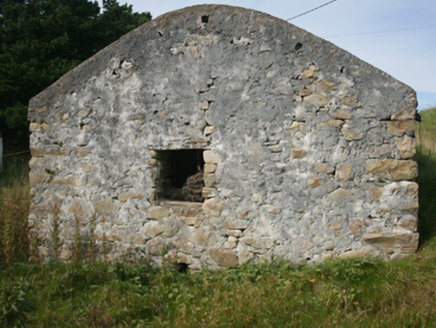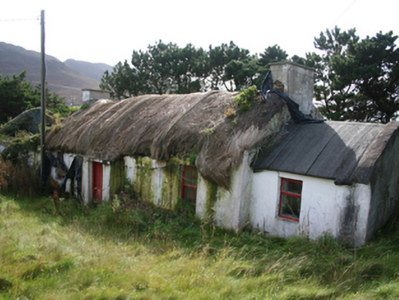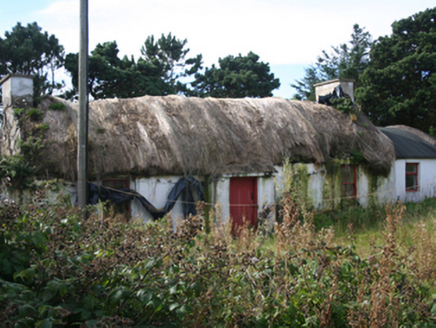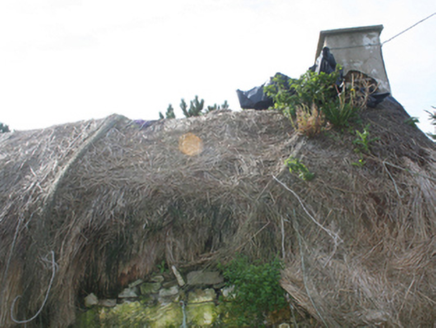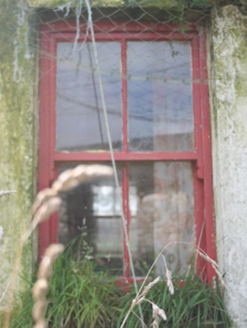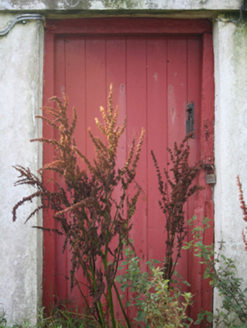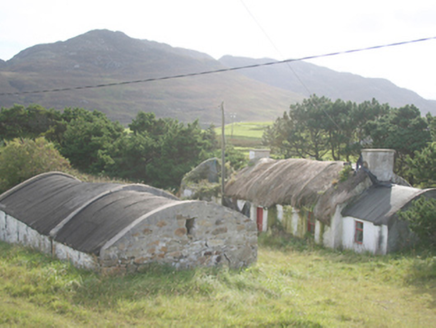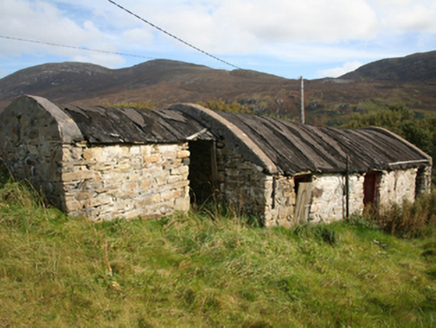Survey Data
Reg No
40900904
Rating
Regional
Categories of Special Interest
Architectural, Technical
Original Use
House
Date
1835 - 1865
Coordinates
231048, 445058
Date Recorded
23/09/2008
Date Updated
--/--/--
Description
Detached three-bay single-storey vernacular house, built c. 1850, with windbreak porch to front, single-bay extensions to both gables, now disused. Round pitched flax thatched roof with latticed restraining ropes and timber pegs, collapsed on south extension; barrel-vaulted tar with concrete gable coping to north extension, limewashed chimneystacks to gables. Limewashed rubble stone walls. Square-headed window openings with timber two-over-two pane horned timber sliding sash windows. Square-headed door opening with replacement timber panelled door. Set within own grounds with four-bay outbuilding to east having barrel-vaulted tar with concrete gable copings, rubble stone walls, and square-headed openings.
Appraisal
early form and character, and is an appealing feature in the scenic rural landscape to the west of Clonmany, located close to the Lough Swilly coastline. Its integrity is enhanced by the retention of much of its salient fabric including timber sliding sash windows and battened timber door. Of particular interest in the survival of the thatch roof, although now collapsing, which is now sadly becoming increasingly rare in Donegal. The rounded roof is a typical feature of thatched houses located close to the sea in exposed areas in the north-west of Ireland, while the pegs to the eaves were used to tie ropes (and sometimes nets) over the roof to secure it against the prevailing winds, as is the case here at Lenan. Modest in scale, it exhibits the simple and functional form of vernacular building in Ireland. It retains some characteristic features of the vernacular tradition to the area including windbreak porch, and irregularly-spaced window openings. The low elongated form of this building, and the position of the chimneystacks, indicates that it was extended along its length at some stage, which is another feature of extended vernacular tradition. The form of this building, having chimneystacks to the gable ends and a central doorway to the original building, suggests that this building is of the ‘direct entry’ type that is characteristic of the vernacular tradition in north-west Ireland. The interesting collection of single-storey outbuildings with barrel-vaulted tarred felt roofs add significantly to the setting, and are important survivals in there own rights. This house represents a fine surviving example of a once ubiquitous building type in the rural Irish countryside, and is a valuable addition to the vernacular heritage of County Donegal. This building and complex contributes character to its rugged and isolated surroundings.
